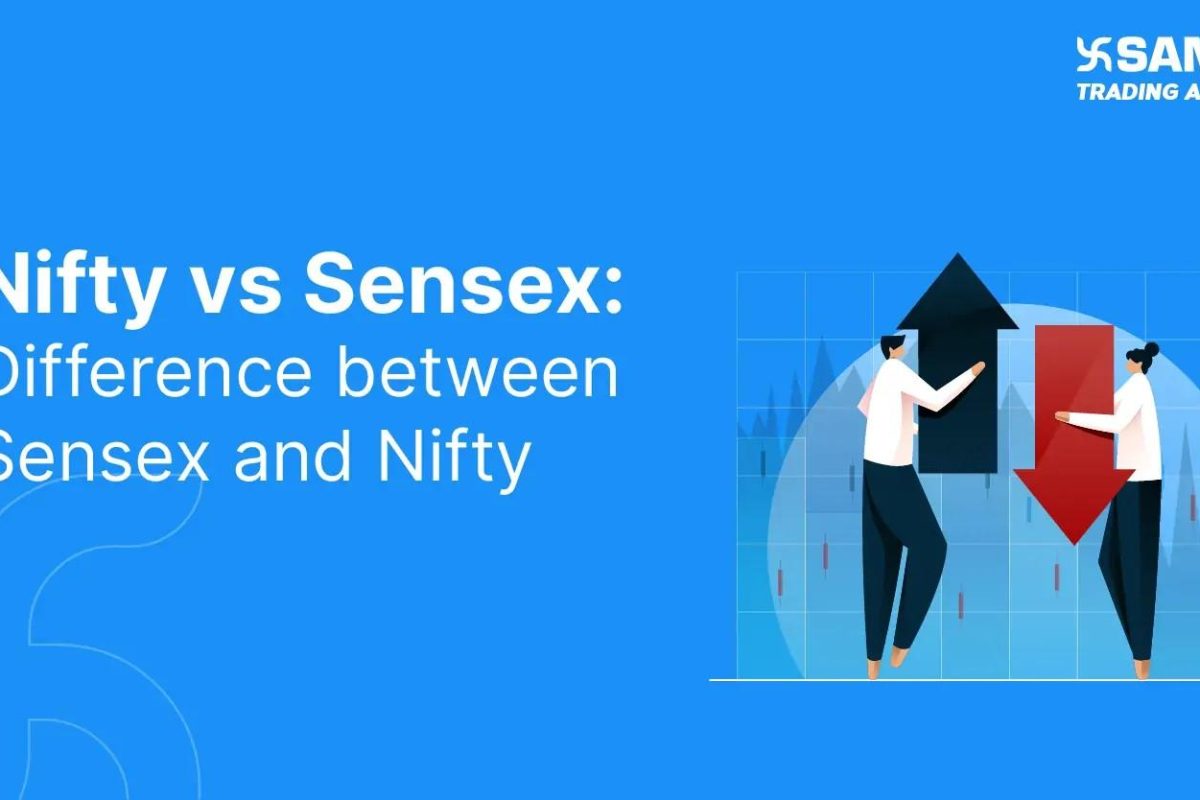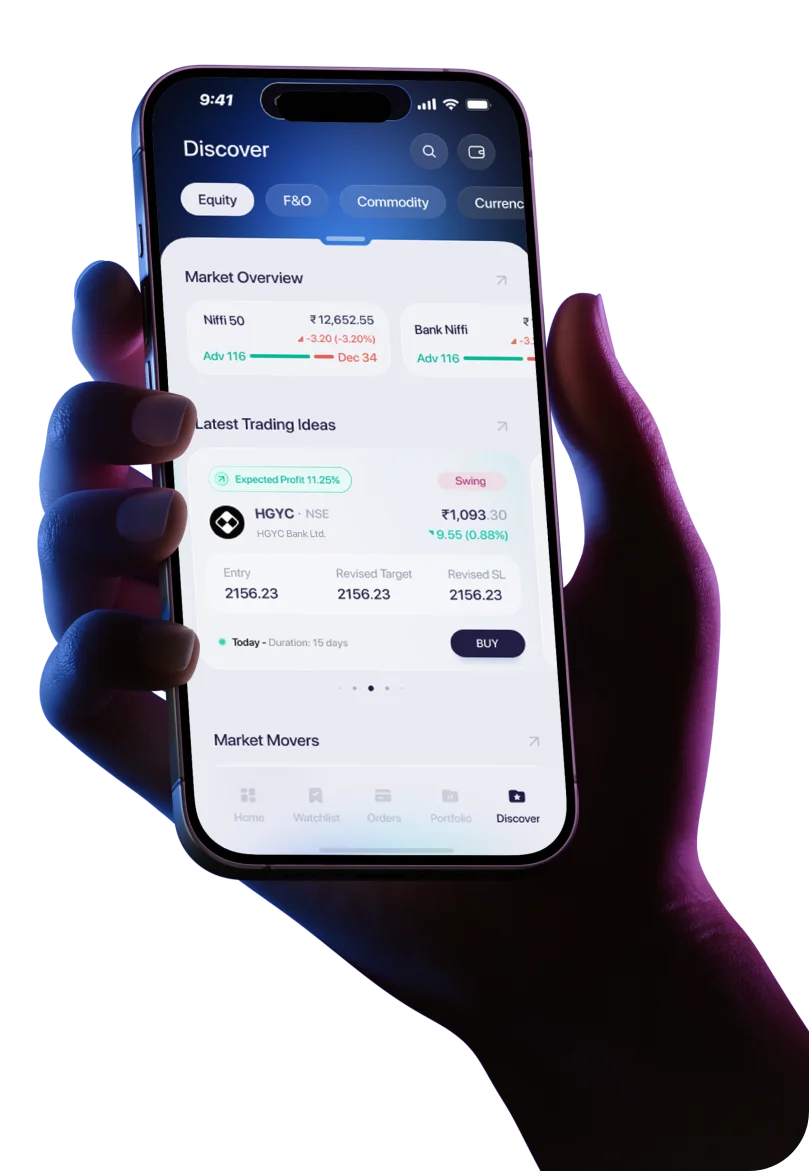When you learn about the Indian stock market, you often come across two standard terms in the news — the Sensex and the Nifty. These benchmark indices reflect the companies' overall performance on the Bombay Stock Exchange (BSE) and the National Stock Exchange (NSE). You are not alone wondering what the difference between the Nifty and the Sensex is.
Many beginners remain unaware of how these two indices compare. However, understanding this difference is the first step towards becoming an informed investor. As you dive deeper into investing, you frequently encounter debates about the Nifty vs the Sensex. These discussions are not about which is better, but about knowing what these indices represent, how they are structured, and how they behave under different market conditions.
To make confident investment decisions, it is important to grasp the meaning of the Nifty and the meaning of the Sensex. Knowing the differences between the Nifty and the Sensex helps you understand which sectors are driving growth, where the risks lie, and how macroeconomic trends affect your portfolio. This foundational knowledge can shape your strategy and risk tolerance in a fast-moving market.
What is the Nifty?
The Nifty, also known as the Nifty 50, is a benchmark stock market index that reflects the performance of the top 50 actively traded companies listed on the NSE. It is owned and managed by NSE Indices Limited, a subsidiary that the NSE wholly owns. Suppose you want to understand the meaning of the Nifty. In that case, you need to see it as a benchmark representing India’s economic engine and covering various sectors, from banking to technology.
How is the Nifty Calculated?
When comparing the Nifty vs the Sensex, you must understand how each index is calculated. This helps you understand why they may show different levels of market movement on the same day.
The Nifty is calculated using the free-float market capitalisation-weighted method. This method considers only the market value of shares readily available for trading. It does not factor in promoter holdings and other restricted shares. Each company’s weight in the index depends on this free-float market capitalisation, making the index a more realistic representation of actual market conditions.
The formula used is as follows:
Index Value = (Current Market Value ÷ Base Market Capital) × Base Index Value
The base year is 1995, and the base value is 1,000. This means the Nifty reflects the market's movement relative to 1995.
Why the Nifty Matters in the Stock Market
The Nifty plays a key role in the stock market because of the following reasons:
Market Benchmark:
The Nifty serves as a benchmark for fund managers and investors. It can also help you gauge how well your investments perform compared to the overall market. If you know the difference between the Nifty and the Sensex, you can use both indices effectively as performance yardsticks.
Sectoral Representation:
The index spans 13 sectors and offers a diversified view of the Indian economy. This makes it worthwhile to assess which sectors are thriving and underperforming. It provides a broader lens than other indices and adds depth to your market analysis.
Investment Products:
Many financial instruments, such as index funds, exchange-traded funds (ETFs), and derivatives, are based on the Nifty. Understanding the differences between the Nifty and the Sensex helps you choose the right product for your goals, whether looking at passive investing or trading strategies.
What is Sensex?
The Sensex, short for the Sensitive Index, is the Bombay Stock Exchange benchmark index. It mirrors the performance of 30 of the most financially sound and well-established companies listed on the BSE. The index was launched in 1986 and is managed by the BSE itself. The 30 companies included are selected based on market capitalisation, liquidity, sector representation, and listing history.
How is the Sensex Calculated?
The Sensex is also calculated using the free-float market capitalisation-weighted method, similar to the Nifty. This method considers only the market value of publicly available shares for trading, ensuring that companies with higher public shareholding significantly impact the index’s movement.
The formula is as follows:
Index Value = (Free-Float Market Capitalisation ÷ Base Market Capitalisation) × Base Index Value
The base year is 1978–79, and the base value is 100. Understanding this formula helps you see the similarities and compare the differences between the Nifty and the Sensex.
Why the Sensex Matters in the Stock Market
The Sensex is a significant benchmark index because of the following reasons:
Historical Benchmark:
The Sensex is India’s oldest stock market index. Its long-term data helps you study market cycles, understand investor behaviour, and understand how economic policies have evolved. If you are a long-term investor, tracking Sensex-based trends can provide deeper historical insights than newer indices.
Blue-Chip Focus:
Companies in the Sensex are generally large-cap entities that are stable and often considered blue-chip stocks. By tracking the Sensex, you can see how India's most influential businesses are performing. This, in turn, can influence your broader investment strategies in the equity market.
Global Reference Point:
Global investors, institutions, and analysts closely watch the Sensex. Movements in the index often reflect international sentiment toward the Indian economy. So, by knowing the differences between the Nifty and the Sensex and understanding each index, you can interpret how domestic events relate to global perception.
Key Differences Between Nifty and Sensex
You may have noticed that both the Nifty and the Sensex track the performance of top Indian companies, but they are not the same. While they serve similar purposes, their structure, scope, and influence differ subtly yet significantly.
A detailed comparison highlights the key differences between the Nifty and the Sensex across multiple parameters to help you make more informed investing decisions.
Particulars | Nifty | Sensex |
Full Name | Nifty 50 | Sensitive Index |
Stock Exchange | National Stock Exchange (NSE) | Bombay Stock Exchange (BSE) |
Year of Launch | 1996 | 1986 |
Number of Companies | 50 | 30 |
Coverage | A broader representation of the Indian economy | Focused on the top 30 well-established BSE companies |
Managing Body | NSE Indices Limited | BSE (Bombay Stock Exchange) |
Base Year | 1995 | 1978–79 |
Base Value | 1,000 | 100 |
Calculation Method | Free-float market capitalisation-weighted | Free-float market capitalisation-weighted |
Type of Index | Broad-market index | Market performance index |
Liquidity | Generally high due to its broader stock base | Very high due to the inclusion of blue-chip stocks |
Sector Coverage | 13+ sectors, offering wider economic exposure | Covers various sectors with a focus on stability |
Volatility | Slightly less volatile due to diversification | Can be more volatile due to fewer stocks |
Popular Among | New-age investors and mutual fund investors | Traditional investors, analysts, and economists |
Which Index is More Important?
When it comes to tracking market sentiment, both the Nifty and the Sensex are equally critical. They serve as performance indicators for two of India's largest stock exchanges and provide insights into the economy's health. While the Nifty includes more companies, the Sensex offers historical depth. The Nifty vs. Sensex debate is not about which is better but aligns more closely with your investment goals or trading strategy.
You might wonder what the difference between the Nifty and the Sensex is when both appear to move in the same direction most of the time. The difference lies in their composition, calculation, and market coverage, as seen in this article. Traders use both indices for technical analysis, while long-term investors often track them to study broader market cycles, identify sectoral shifts, and evaluate economic trends.
The differences between the Nifty and Sensex become more relevant when benchmarking your portfolio or choosing an index fund. Some prefer the Nifty for its broader representation, while others rely on the Sensex for its historical stability. In practice, investors and institutions look at both indices to cross-validate signals, gauge market confidence, and time their entry or exit more accurately.
Conclusion
The bottom line is that you can improve your perspective on market trends by understanding the meaning of the Nifty and the Sensex. Both indices are vital benchmarks that mirror the Indian economy, but each offers a different lens. One is broader, while the other is more legacy-driven. Neither is superior, and each serves a distinct purpose depending on your strategy.
So, what is the difference between the Nifty and the Sensex? It is about index composition, sectoral spread, and historical context. Knowing how to use the Sensex and the Nifty can make your investment decisions more balanced and well-informed.




 Easy & quick
Easy & quick
Leave A Comment?